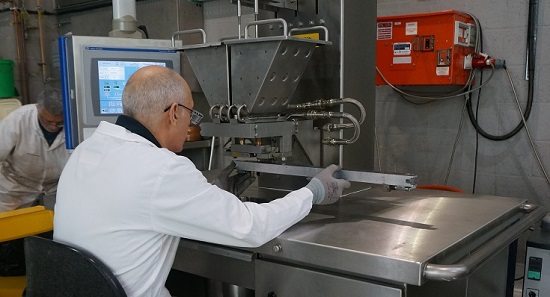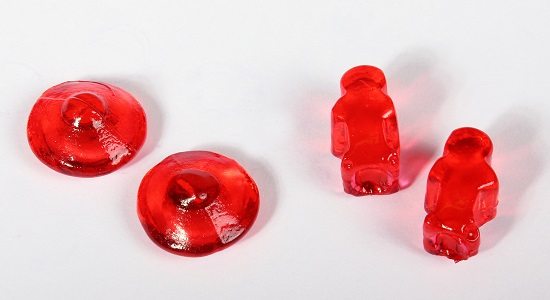Baker Perkins has introduced technology to deposit three dimensional (3D) jellies, which can be made in one or two colors; with stripes and layers; with solid or soft center-fills; and with inclusions such as real fruit pieces.
The process uses quick-setting jelly formulations, typically pectin- or carrageenan-based.
However, 3D shapes are not possible with a starch molding system.
Product possibilities include balls or spheres, animals and cartoon characters, and fruit shapes such as raspberries, strawberries and pears.
There is great potential for character merchandising linked to television and films.
Because of the importance of speed-to-market in this short-term environment, the process of developing a new product ready for manufacture has been compressed.
New designs can be visualized and models made very quickly using 3D computer aided design or CAD and 3D printing, which is also used to make test molds for trials.
To ensure fast changeover between production runs, the mold system uses a new carrier design with clip-in molds that allows rapid low-cost product change by replacing just the molds rather than the complete carrier system.
This widens the range of products that a single line can produce, and this versatility may be enhanced by the ability to deposit multiple shapes in different colors simultaneously.
One ServoForm depositing line can produce the same product range as a number of smaller low output lines – but at much lower cost.
Air ejection from the mold is more hygienic than brush based ejection systems, and ensures the product is undamaged.
With outputs ranging from 100 to 1,000 kg/hour, initial low outputs can be scaled up.
Accurate positioning of the mold under the depositor nozzle and of the stream of syrup into the mold ensure consistent mold fill with no waste and allow the mold opening to be minimized, achieving a more realistic 3D shape.
Baker Perkins’ lines for conventional and 3D jellies comprise cooking, depositing and cooling. The products are deposited at final solids so no drying is required.
As an alternative to starch moguls, starchless depositing is significantly more cost-effective in every aspect.
It is also hygienic with a fully automatic wash-through function, non-contact ejection system and no recycling of starch.











